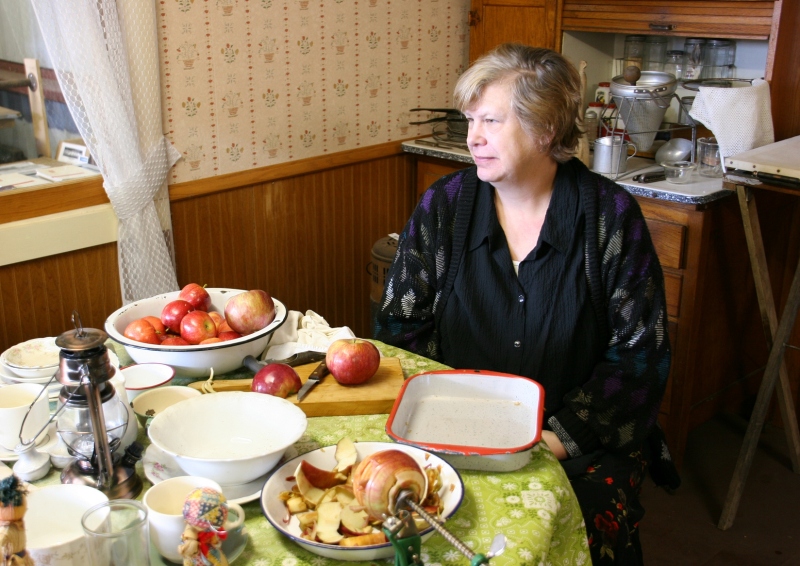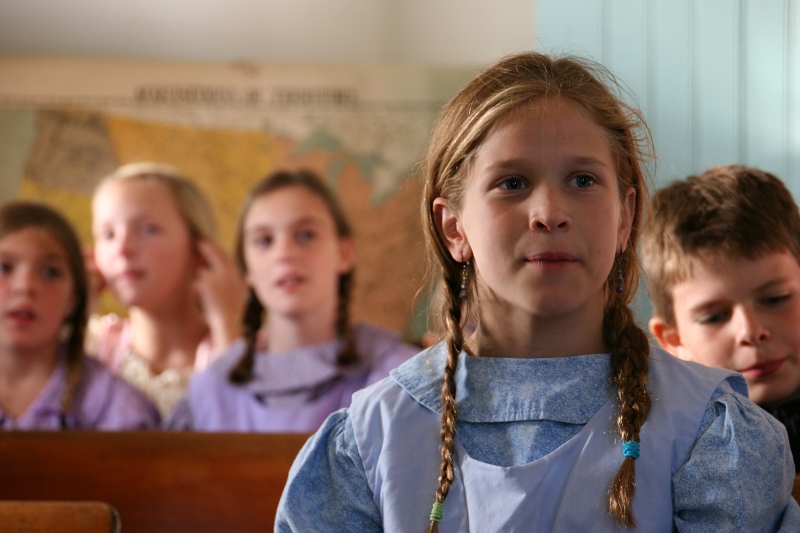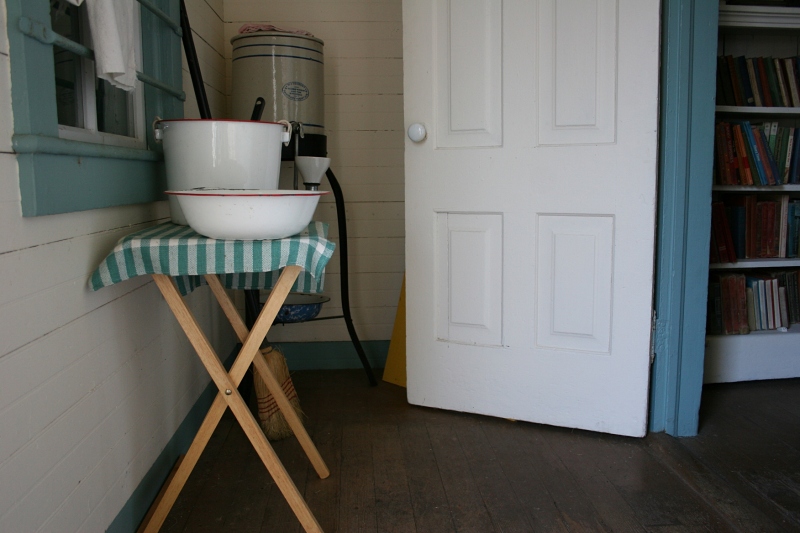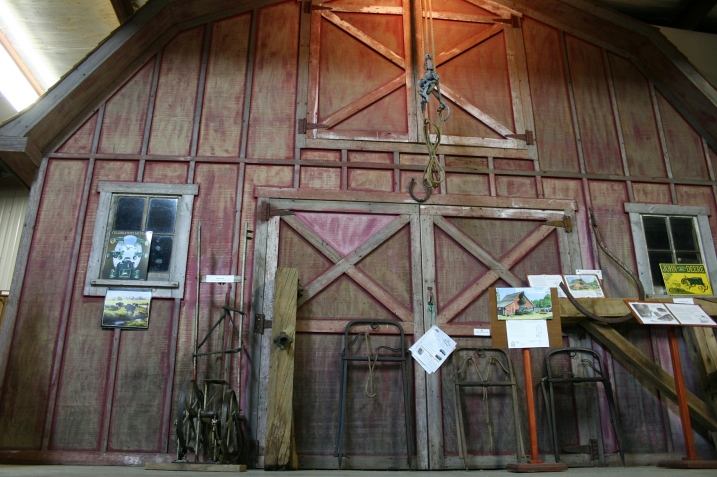THE ENTHUSIASM OF THE KIDS impressed me. Girls in Laura Ingalls Wilder style calico bonnets and prairie skirts and dresses. Boys in period caps and hats and bib overalls. And then the teens in football jerseys, celebrating locally-grown 1941 Heismann Trophy winner Bruce Smith.

A photo cut-out of Bruce Smith next to Pleasant Valley School and next to a grassy area where kids (mostly) tossed footballs.
All engaged in Night at the Museum, an event hosted by the Rice County Historical Society last Saturday. They led activities, participated and presented a local living history that reminded me of those who settled and grew this southeastern Minnesota county.

Pleasant Valley School, built in the 1850s, and Holy Innocents Episcopal Church, built in 1869. Both were relocated to the Rice County Historical Society grounds.
While it’s easy to romanticize that life, the reality is that life back-in-the-day was labor intensive and often difficult. But also joyful. Just like today, only different in the joys and challenges. Back then students learned from books and used slates and chalk. Lots of rote memorization within the confines of a bare bones one-room country school. Today’s kids use different tools—primarily technology. And hopefully they learn in better ways than simply memorizing and regurgitating.
As I pounded out words on a manual typewriter in the Heritage and Harvest Halls, I thought how grateful I am for computers. Writing and photography are so much easier with this tool. No more xxxxing out words on paper or buying and processing film. When I spoke with my husband Randy on a crank telephone, I recalled the days without a telephone and how my mom ran to the neighbor’s farm when a fire started in a hay bunk next to the barn. Now I use a cellphone and, yes, also a landline. Watching two men team up on sharpening an axe, I recalled the mean rooster on my childhood farm. When we’d all had enough of his terrorizing us, Dad grabbed the axe.
When I saw a Surge milking machine, I remembered how hard my dad worked on our family’s crop and dairy farm and all those years I helped with barn chores and watched Dad head out to the field on his John Deere tractor.
These are the places, the times, I remembered as I walked from spot to spot at the Rice County Historical Museum grounds. Night at the Museum provided many opportunities for reflection, for remembering when I was young (er)…
FYI: Please click here to read my first post about this year’s Night at the Museum.
© Copyright 2019 Audrey Kletscher Helbling














































































































Recent Comments